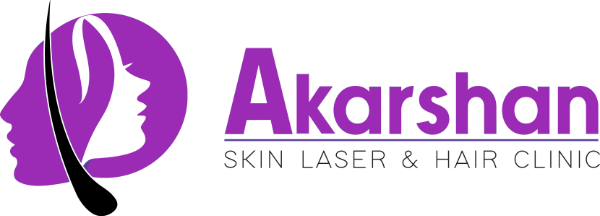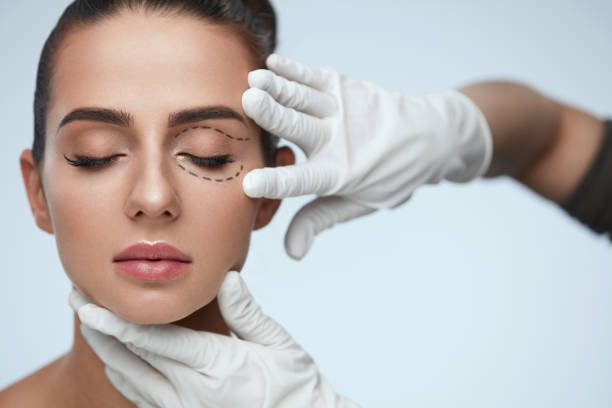Asian eyelid surgery, also known as double eyelid surgery or blepharoplasty, is a cosmetic procedure. It aims to create a crease in the upper eyelid for people of Asian descent who naturally have a single eyelid.
This procedure is performed to enhance the appearance of the eyes and give a more open and defined look.
The surgery can be done using various techniques, including incisional and non-incisional methods. It can also be tailored to each individual’s unique anatomy and goals.
Things to Take Away from This Blog
1) Eyelid surgery is completely safe.
2) Eyelid surgery has no side effects or very few side effects.
3) It is a permanent procedure, but sessions can be repeated over time if natural factors make the problem reappear.
4) Professional doctors minimize or avoid the risk of infection altogether. This is why it is important to choose a professional clinic with a good track record of doing eyelid surgeries.
Let’s know about the issue first
Understanding the anatomy of the Asian eyelid is important for the successful planning and execution of Asian eyelid surgery (blepharoplasty). It aims to create a crease in the upper eyelid for a more defined and open-eyed appearance.
The anatomy of the Asian eyelid refers to the structure and composition of the upper eyelid in people of Asian descent.
It typically lacks a crease, giving it a monolid appearance, and has different muscular and fatty components compared to other eyelid types.
Types of Eyelid Surgeries
Generally, there are two types of eyelid surgeries: Upper eyelid surgery and lower eyelid surgery. Meanwhile, the upper eyelid surgery itself has two types. We will cover the topics below.
Upper Eyelid Surgery
a) Mongolian eyes/ Asian Eyelid Surgery
Mongolians have eyelids that do not have a crease. This is largely due to genetics.
In this case, Mongolians, especially females, may want to get creased eyelids.
Having creased eyelids is beneficial for cosmetic reasons. It makes it easier to apply eye makeup and makes the makeup appear more attractive.
Some females who do not have creased eyelids have been using tape to make up for it. However, it can be uncomfortable, messy, and time-consuming.
As a result, Asian eyelid surgery is a permanent and preferred solution. Also, this surgery is faster and can be done conveniently.
Remember that this is a permanent solution but nobody will notice the surgery.
The surgery takes approximately an hour to be completed by a skilled professional. Also, it takes just one week to recover and get permanent results.
b) Hooded eyelid removal
This is another type of upper eyelid surgery that is preferred by aging individuals.
Aging is a natural process, and you should gracefully accept it. However, you lose the crease in the eyelids with age. This results in shaggy eyelids, which may be concerning for some from a cosmetic point of view.
The hooded eyelid removal procedure helps you to regain a youthful appearance.
Aged males and females go through this surgical procedure.
Again, the word “surgery” may raise alarms for most laymen reading this, but it is a quick and convenient procedure.
Lower Eyelid Surgery
Lower eyelid surgery is a bit timely and has a longer recovery period.
While upper eyelid surgery is a preferential cosmetic procedure, lower eyelid surgery is a necessity for most.
People who look sleepy, and older than their age because of protruding lower eyelids, can go through lower eyelid surgery.
With age and various other factors, the inner eyelid fat can come out and alter the facial appearance, a process we call herniation.
This makes the eyes and the overall face appear more cosmetically unattractive than before. The lower eyelid surgery aims to remove the excess herniated fat and retain the client’s youthful appearance.
Note that although lower eyelid surgery is a permanent solution, some may regain the fat in the eyelid, as a result of the natural process. After consultation with a professional, they may then choose to repeat the procedure.
Varieties of Asian Eyelid Surgery
Double eyelid surgery or blepharoplasty, also known as a cosmetic procedure, creates a crease in the upper eyelid for individuals with a naturally single eyelid.
Surgeons perform the procedure to enhance the appearance of the eyes and provide a more defined and open look.
There are two main types of Asian eyelid surgery: incisional and non-incisional methods.
Incisional methods involve making small incisions in the eyelid to create a crease, while non-incisional methods. The method involves using sutures or other techniques to lift the eyelid skin without incisions.
The appropriate technique for a patient will depend on the individual’s anatomy, goals, and other factors, and will be discussed during the consultation with a qualified practitioner.
Regardless of the type of surgery, the goal is to create a natural-looking crease that enhances the appearance of the eyes and provides a more aesthetically pleasing look.
Who should get Asian eyelid surgery/ blepharoplasty?
Individuals of Asian descent who desire to have a defined crease on their upper eyelid can be candidates for Asian eyelid surgery.
The procedure is typically performed for cosmetic reasons to enhance the appearance of the eyes.
It involves creating a crease on the upper eyelid that was not naturally present.
How should I prepare for Asian eyelid surgery?
Before undergoing Asian eyelid surgery, there are several steps that individuals should take to ensure they are fully prepared for the procedure.
The first step is to consult with a qualified plastic surgeon who specializes in Asian eyelid surgery.
This allows the patient to discuss the procedure, ask questions, and determine if they are a good candidate for the surgery.
It is also important to stop smoking and avoid alcohol in the weeks leading up to the surgery, as both can negatively impact the healing process.
The plastic surgeon will advise the patient on which medications to avoid, as some can increase the risk of bleeding during and after the procedure.
Arranging for transportation and recovery is also crucial, as patients should have someone available to stay with them for the first 24-48 hours following the procedure.
Additionally, getting plenty of rest and eating a healthy diet can help promote faster healing and a more successful outcome.
By taking these steps and following the instructions provided by the plastic surgeon, individuals can prepare themselves for a safe and successful Asian eyelid surgery.
What should I expect during the Asian eyelid surgery procedure?
Asian eyelid surgery is performed under local anesthesia or conscious sedation, depending on the patient’s preference and the surgeon’s recommendation.
During the procedure, the surgeon will create a crease on the eyelid by removing excess skin problems and fat, and repositioning the underlying muscle and tissue. The procedure typically takes 1 to 2 hours to complete.
After the surgery, the patient may experience swelling, bruising, and some discomfort.
To manage any discomfort, the surgeon may prescribe pain medication. It is important to closely follow the surgeon’s instructions on how to care for the incision sites to minimize the risk of infection and promote healing.
It is also important to avoid activities that put stress on the eyes, such as heavy lifting, for a certain period of time, as advised by the surgeon.
Most patients can return to work and normal activities within 7 to 10 days after the surgery, although full healing can take several weeks.
The surgeon will schedule follow-up appointments to monitor the patient’s progress and ensure that the desired results have been achieved.
With proper care and attention, individuals can expect to see the results of their Asian eyelid surgery and enjoy the benefits for years to come.
What are the aftercare procedures?
It is essential to take proper care during the post-operative recovery period following Asian eyelid surgery.
The plastic surgeon will provide specific instructions on how to care for the incision sites, including cleaning and application of ointments or dressings.
Pain and discomfort may be experienced post-surgery, and the patient may be prescribed pain medication to manage this.
To minimize swelling and promote healing, it is important to avoid activities that put stress on the eyes, for a designated period of time.
Protection from the sun is also necessary, so the patient should wear sunglasses or a hat for several weeks after the surgery.
The plastic surgeon will schedule follow-up appointments to monitor progress and ensure that the desired results are achieved.
By following these steps and closely adhering to the instructions provided, individuals can expect a successful recovery after their Asian eyelid surgery.
Are there any side effects or possible complications with the Surgery?
Asian eyelid surgery, like any surgical procedure, has associated risks and potential complications.
The most common risks include infection, scarring, changes in vision, uneven results, and numbness. Infections can occur at the incision site and can be prevented by following the surgeon’s post-operative care instructions.
Scarring is a possibility with any surgery, but with Asian eyelid surgery, it is typically minimal and well-hidden.
Changes in vision may occur temporarily but usually resolve on their own. Uneven results may also occur, but a secondary procedure can correct this.
Numbness or tingling in the eyelid and surrounding areas is a possibility after the surgery, but it is typically temporary and resolves on its own.
It is crucial to discuss the potential risks and complications of the procedure with the surgeon before undergoing Asian eyelid surgery to fully understand them and make an informed decision.
Selecting a Skilled Professional for Asian Eyelid Surgery
When considering Asian eyelid surgery, it is important to select a qualified practitioner who has extensive experience performing the procedure and is certified by the board of plastic surgery.
The following factors should be taken into consideration when making this decision:
Training and Certification: A practitioner must be a board-certified plastic surgeon or dermatologist and should have a significant track record of performing successful Asian eyelid surgeries.
Results: A qualified practitioner should have a proven history of delivering exceptional results. Patients should view before-and-after photos of the practitioner’s previous clients to gauge the quality of results they can expect.
Communication: The practitioner should be willing to listen to the patient’s concerns and provide clear, honest answers to their questions.
Safety: The patient’s safety and well-being must be prioritized by the practitioner, who should use only techniques that are known to be safe and effective.
By keeping these considerations in mind, individuals can ensure that they choose a qualified practitioner who will produce optimal results while ensuring their safety and well-being throughout the Asian eyelid surgery process.
Comparing Asian Eyelid Surgery to Other Eyelid Procedures
Asian eyelid surgery creates a defined crease in the upper eyelid, while other eyelid procedures, such as upper eyelid surgery, address issues like sagging skin, wrinkles, and puffiness.
It is a unique procedure that is specific to individuals of Asian descent.
Upper eyelid surgery is another type of eyelid procedure that addresses issues like sagging skin, wrinkles, and puffiness.
During t surgery, the surgeon removes excess skin and fat from the upper eyelid area and tightens the remaining skin for a more youthful and refreshed appearance.
This procedure can improve vision by removing excess skin that may obstruct the upper visual field.
While both procedures aim to improve the appearance of the eyes, the surgery focuses on creating a crease in the upper eyelid and addresses issues such as sagging skin and puffiness.
It is important to discuss the desired outcomes and specific needs with the surgeon to determine which procedure is the best option.
In some cases, individuals may opt for both Asian eyelid surgery and upper eyelid surgery to address multiple issues and achieve their desired outcome.
However, it is important to choose a qualified practitioner who has experience performing both procedures and who can provide guidance on the best approach.
Outcomes and Advantages of Asian Eyelid Surgery
Asian eyelid surgery is a cosmetic procedure that can produce a range of outcomes and advantages.
The surgery can enhance the appearance of the eyes by creating a defined crease in the upper eyelid and improving the overall look of the eye area.
This can lead to increased self-confidence and self-esteem. In some cases, the surgery can also improve vision by removing excess skin from the upper eyelid that was obstructing the field of vision.
The results are long-lasting and can be preserved with proper skin care and sun protection.
It is important to discuss the desired outcomes and benefits of the procedure with the surgeon before undergoing the surgery.
This way, the patient can gain a better understanding of the results and benefits that can be achieved.
Why We Are The Best
The eyes are an important aspect of facial appearance and can greatly impact the overall look and cosmetic appeal of the face.
They play a key role in expressions and symmetry and can convey emotions and feelings.
Cosmetic treatments such as eyelid surgery or fillers can help enhance the appearance of the eyes and improve overall facial aesthetics.
We at Akarshan Skin Laser and Hair Clinic believe in delivering maximum efficiency and safety in our procedures.
Surgery is a skill. The experience of your surgeon, and their past results are very important in choosing the right practician for you.
We have the most experienced surgeons and dermatologists in our clinic who ensure your time with us goes exactly as planned and expected.
F&Qs related to Asian eyelid surgery
What is Asian eyelid surgery?
Asian eyelid surgery, also known as double eyelid surgery. It is a cosmetic procedure that creates a crease on the upper eyelid to create a more defined, aesthetically pleasing appearance.
Is Asian eyelid surgery painful?
Patients might experience some discomfort and swelling after the procedure. After post-surgery, they can typically manage the pain with pain medication as it is usually mild.
How long is the recovery time for the procedure?
Recovery time can vary, but most patients can return to work and normal activities within 1 to 2 weeks after the procedure.
What are the risks and complications of the surgery?
Like all surgical procedures, It carries some risks, including infection, scarring, and changes in vision. However, these risks are rare and can usually be minimized with proper care and follow-up.
What should I expect during a consultation?
During a consultation for Asian eyelid surgery, the surgeon will examine your eyes and eyelids, and discuss your goals and expectations. Based on this examination and discussion, the surgeon will recommend a customized treatment plan to achieve the desired results.
How much does the surgery cost?
Variations in cost are caused by factors such as the surgeon’s experience and location, the extent of the procedure, and whether it is performed in a hospital or outpatient facility. It is best to schedule a consultation to obtain a specific cost estimate.
Additionally, if you found this blog post interesting, you may also be interested in: https://akarshanskin.com/our-services/black-doll-laser/



Leave A Comment